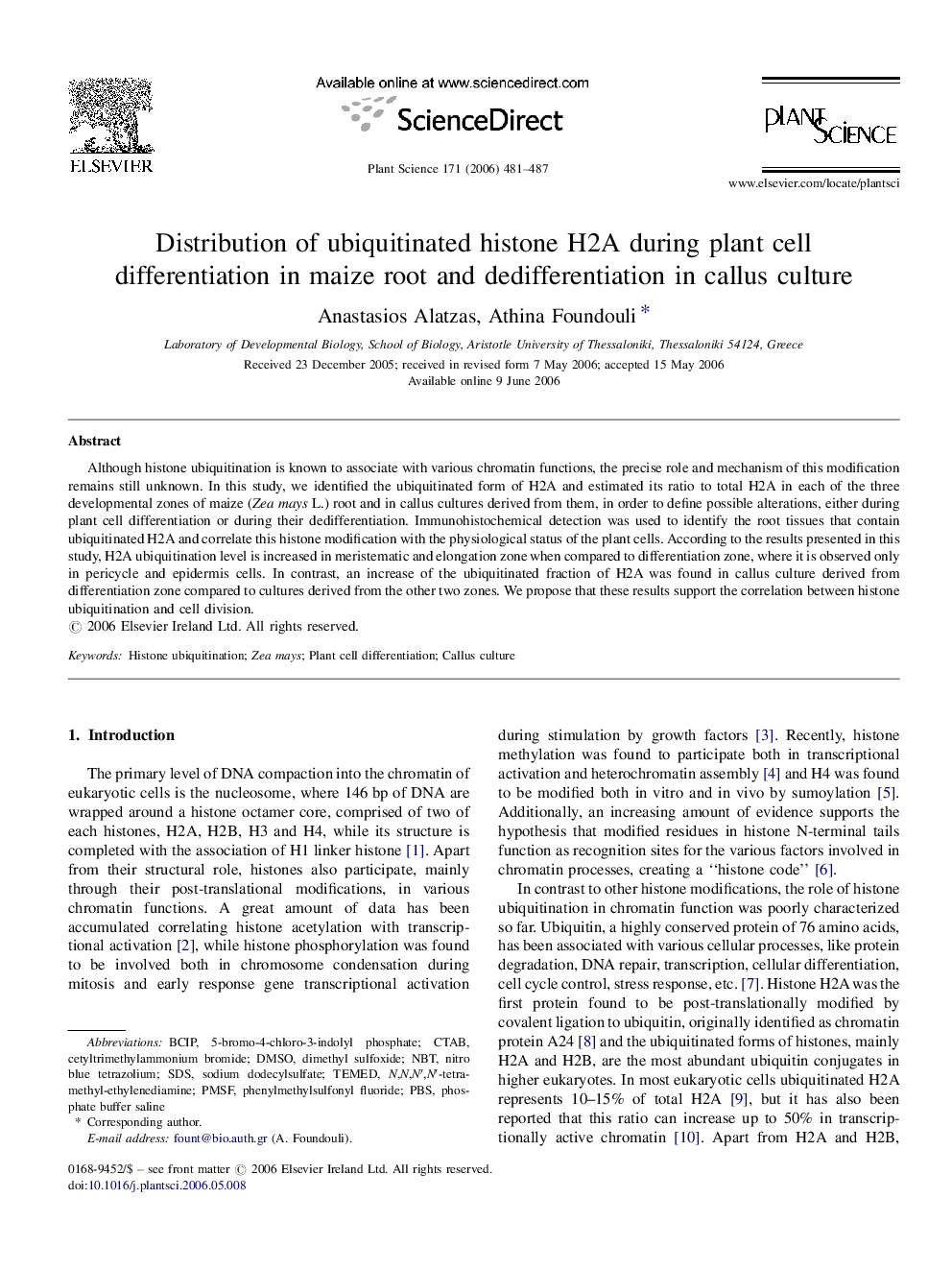| Article ID | Journal | Published Year | Pages | File Type |
|---|---|---|---|---|
| 2018823 | Plant Science | 2006 | 7 Pages |
Although histone ubiquitination is known to associate with various chromatin functions, the precise role and mechanism of this modification remains still unknown. In this study, we identified the ubiquitinated form of H2A and estimated its ratio to total H2A in each of the three developmental zones of maize (Zea mays L.) root and in callus cultures derived from them, in order to define possible alterations, either during plant cell differentiation or during their dedifferentiation. Immunohistochemical detection was used to identify the root tissues that contain ubiquitinated H2A and correlate this histone modification with the physiological status of the plant cells. According to the results presented in this study, H2A ubiquitination level is increased in meristematic and elongation zone when compared to differentiation zone, where it is observed only in pericycle and epidermis cells. In contrast, an increase of the ubiquitinated fraction of H2A was found in callus culture derived from differentiation zone compared to cultures derived from the other two zones. We propose that these results support the correlation between histone ubiquitination and cell division.
